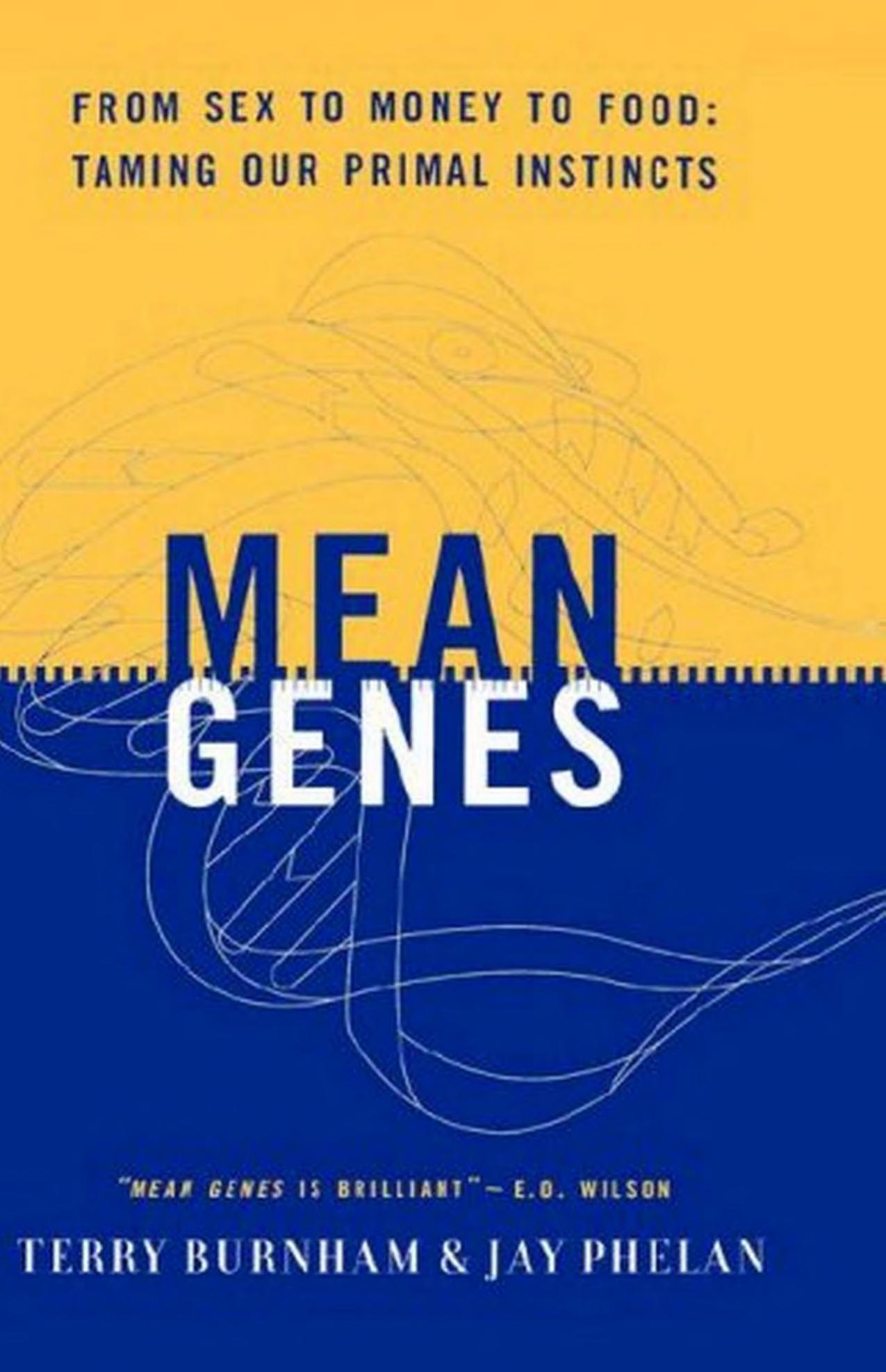Mean Genes: From Sex to Money to Food: Taming Our Primal Instincts by Terry Burnham Jay Phelan

Author:Terry Burnham, Jay Phelan
Language: eng
Format: mobi, epub, pdf
Publisher: Penguin
Published: 2010-12-26T21:38:58.156000+00:00
ROMANCE AND REPRODUCTION
Gender Girls against the boys
All animals play the mating game. In the movie EDtv, Woody Harrelson is caught on camera cheating on his girlfriend. When asked why he didn't turn down the woman's offer of sex, he says, "I'm a guy, I don't stop. That's the woman's job.. . . We're the gas, they're the brakes." What is the origin of our stereotypes for men and women?
Believe it or not, we can learn a lot about human sex stereotypes by examining an obscure little insect called the bush cricket. Although bush crickets don't have bars or dating services, they do congregate, check each other out, and — just like humans — ponder whether they should perhaps mate with a new acquaintance.
Ah, but there is one small difference. When the pair decides to mate and the male cricket ejaculates, he loses about a quarter of his body weight — contributing a massive ejaculate that the female uses for energy. For an average human male, this would be about fifty pounds of semen! If this were the rule in men, rather than the "lovin' spoonful" it actually is, would human males behave differently? The answer is yes, and the ramifications extend far beyond sexual tactics.
For a female cricket this sexy meal is important. The more nutrition she gets, in the form of food and sperm, the more baby crickets she produces. While we humans eat hundreds of times our weight in food over a lifetime, insects get by with much less. Their total lifetime food intake can be as little as two times their body weight.
A single ejaculation of a male cricket might, therefore, provide more than a tenth of the food that a female eats in her lifetime. Needless to say, this is a precious commodity, which she is careful not to waste. She efficiently converts nearly all of it into fertilized eggs.
As we might predict, male crickets are choosy when it comes to selecting a mate (wouldn't you be if it involved a fifty-pound ejaculation?). In particular, males reject small females that would produce few babies. With a maximum of a few bouts of love in his short life, a male cricket is intent on finding the mate that will best further his reproductive goals. Females, on the other hand, are looking for sex. After all, they can look forward to a nutritious sperm meal. Just as we'd suspect, females court males. If they could talk, we can imagine that the females would make all sorts of promises of fidelity and love.
In contrast to discerning male crickets, data do confirm that men are easy. Human males show little hesitancy to engage in casual sex. In a study of college students, 75% of men expressed a willingness to have sex when propositioned by a female experimenter of average attractiveness. (Many of the men who declined actually apologized.) How many women said yes to the same question asked by a male experimenter? Not one.
The gender question. Should women drive tanks
Download
Mean Genes: From Sex to Money to Food: Taming Our Primal Instincts by Terry Burnham Jay Phelan.epub
Mean Genes: From Sex to Money to Food: Taming Our Primal Instincts by Terry Burnham Jay Phelan.pdf
This site does not store any files on its server. We only index and link to content provided by other sites. Please contact the content providers to delete copyright contents if any and email us, we'll remove relevant links or contents immediately.
Rewire Your Anxious Brain by Catherine M. Pittman(18589)
Talking to Strangers by Malcolm Gladwell(13290)
The Art of Thinking Clearly by Rolf Dobelli(10322)
Mindhunter: Inside the FBI's Elite Serial Crime Unit by John E. Douglas & Mark Olshaker(9263)
Becoming Supernatural by Dr. Joe Dispenza(8167)
Change Your Questions, Change Your Life by Marilee Adams(7684)
Nudge - Improving Decisions about Health, Wealth, and Happiness by Thaler Sunstein(7656)
The Road Less Traveled by M. Scott Peck(7555)
The Lost Art of Listening by Michael P. Nichols(7453)
Mastermind: How to Think Like Sherlock Holmes by Maria Konnikova(7278)
Enlightenment Now: The Case for Reason, Science, Humanism, and Progress by Steven Pinker(7272)
Win Bigly by Scott Adams(7139)
The Way of Zen by Alan W. Watts(6551)
Daring Greatly by Brene Brown(6473)
Big Magic: Creative Living Beyond Fear by Elizabeth Gilbert(5676)
Grit by Angela Duckworth(5555)
Ego Is the Enemy by Ryan Holiday(5347)
Men In Love by Nancy Friday(5192)
The Laws of Human Nature by Robert Greene(5080)
